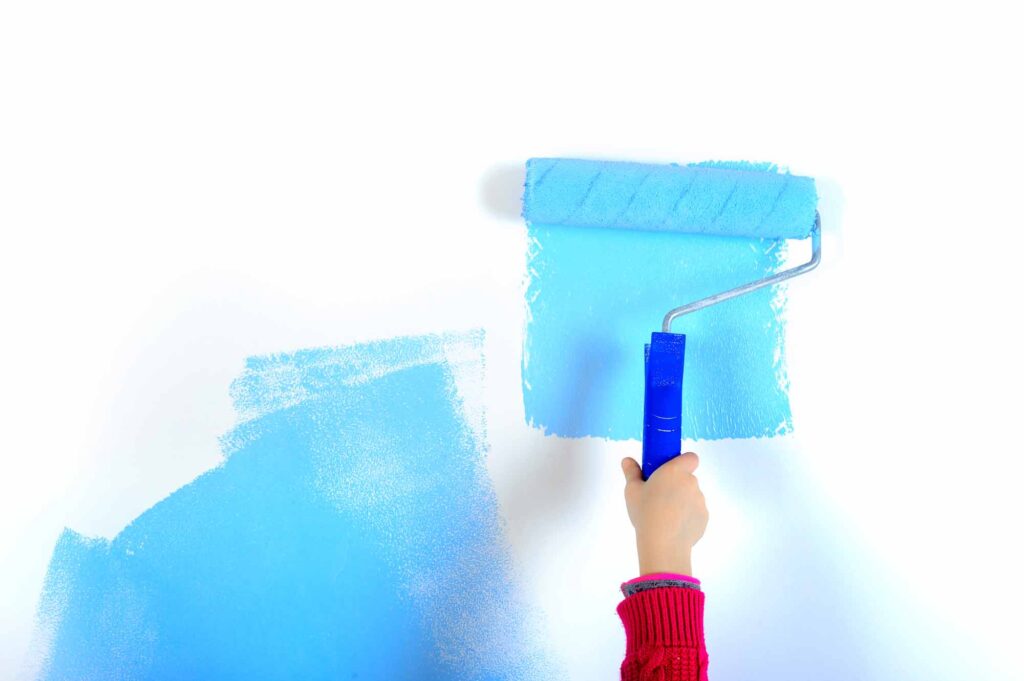The world of home improvement is ever-changing, and there’s no doubt that a fresh coat of paint can work wonders in transforming any space.
As a homeowner, you might often find yourself pondering over the perfect time to undertake an indoor painting project. Elements like weather, temperature, and humidity levels significantly influence the right moment to grab your paintbrush. In this article, we will explore when is the best time to paint indoors, emphasizing the significance of perfect conditions and sharing expert advice to make your painting project a triumph.
Picture yourself entering a newly painted room, basking in the rich colors and the rejuvenating ambiance it brings. The satisfaction of breathing new life into your space is incredibly fulfilling. However, if not properly planned and executed, your painting project may become a source of frustration.
Timing is everything, and grasping the nuances of when to paint can save you from potential headaches. By the end of this article, you’ll possess the knowledge needed to make well-informed choices for your upcoming painting endeavors, ultimately resulting in impeccable and enduring outcomes.
Seasonal Considerations
Springtime is often seen as the perfect time for indoor painting projects. Thanks to the warmer weather and longer daylight hours, you’ll have more time to work and let the paint dry properly. Plus, the moderate humidity levels of spring help paint stick to surfaces better.
Although summer may provide even more daylight, the heat, and high humidity can make it less than ideal for painting indoors. Paint can dry too quickly, resulting in a less-than-perfect finish. However, air conditioning can help overcome this obstacle.
Fall is another excellent time for indoor painting, much like spring. The cooler temperatures and lower humidity levels make it easier for the paint to dry and cure, while the mild weather allows for open windows and improved ventilation.
Winter can be challenging for indoor painting due to low temperatures and limited daylight hours. However, as long as you maintain a consistent indoor temperature and have proper lighting, painting during the winter is still feasible.
Temperature and Humidity
The best temperature range for painting indoors is between 60 and 85 degrees Fahrenheit (15 to 29 degrees Celsius). This range allows for proper paint adhesion and drying.
A 40% and 50% humidity level is optimal for indoor painting. If the humidity is too high, the paint may not dry correctly, leading to drips and an uneven finish.
The Importance of Ventilation
Proper ventilation is crucial when painting indoors to avoid inhaling harmful fumes and to help the paint dry more quickly.
Open windows and doors and use fans to circulate the air. If possible, paint on a day when you can keep your home well-ventilated.
Morning vs. Evening
Painting in the morning or late afternoon often provides the best conditions, with moderate temperatures and plenty of natural light. Avoid painting in direct sunlight, as this can cause the paint to dry too quickly.
Plan your painting project around the available daylight hours to ensure you have enough time to complete the job and for the paint to dry properly.
Time Off Work
If you need to take time off work to complete your painting project, choose a convenient time for both you and your employer.
Avoid painting just before or during holidays and special events, as this can add stress to your schedule and potentially disrupt your plans.
Availability of Help
If you rely on friends or family to help with your painting project, coordinate with their schedules to ensure they’re available when needed.
If you’re hiring professional painters such as the professional and friendly team at Infinity Painting, their availability may also impact the best time for your project. Book in advance to secure your preferred dates.
Preparation is Key!
Before you paint, you’ll need to clear the space of furniture and belongings. Consider the time and effort this may require when planning your painting project.
Address any necessary repairs and clean the surfaces to be painted before starting. This may include filling holes, sanding rough spots, and removing dirt and grease.
Choosing the right paint is the most crucial element of your project. Consider the drying time and ventilation requirements when selecting between oil-based and water-based paints. Also, choose the right paint sheen for your project based on durability and desired finish.
Ensure you have all the essential painting tools before starting, such as brushes, rollers, paint trays, drop cloths, and painter’s tape. Remember to rent or purchase ladders or scaffolding if needed.
Thoroughly mix your paint before starting and prime your surfaces if necessary for better paint adhesion and coverage.
Begin by “cutting in” around the room’s edges with a brush before using a roller for larger areas. When using a roller, work in a “W” pattern and overlap each stroke to achieve an even finish.
Drying and Clean Up
Ensure the first coat of paint is completely dry before applying a second coat for proper adhesion and coverage. Allow the second coat, if needed, to dry thoroughly as well.
Dispose of leftover paint, used brushes, rollers, and other materials following local regulations. If you have unused paint, store it in a cool, dry place for future touch-ups or projects.
Reassembling and Enjoying Your Space
Once the paint is completely dry, you can begin to move your furniture and belongings back into the room. Artwork and family photos can be rehung to complete the new look and give it a more homely feel.
Remember to take a minute to enjoy your accomplishment and appreciate a job well done!
To wrap things up, finding the sweet spot for painting your room boils down to nailing the most favorable conditions, ensuring a seamless, efficient, and gratifying experience. By keeping tabs on factors like temperature, humidity, and ventilation, you can craft the perfect environment that not only simplifies the painting process but also results in stunning, long-lasting outcomes. Aim to schedule your painting project during times of mild temperatures and low humidity, typically in late spring or early fall, to sidestep any hiccups caused by extreme weather.
Before diving headfirst into your painting adventure, remember to seek expert guidance, invest in top-notch materials, and get your space ready for the transformation. Patience and a keen eye for detail are your best friends in this endeavor, as the project’s success hinges on your diligence. With impeccable timing and thorough planning, you can revamp your space into a breathtaking haven that mirrors your unique style and preferences. So, go on and grab this chance to create the picture-perfect ambiance in your home, and bask in the joy of a job well executed.

